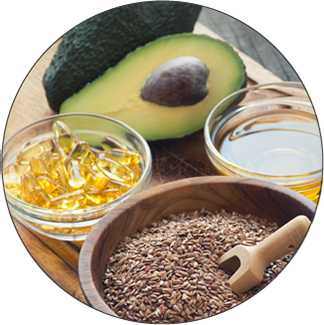Low Carb, High Fat, Moderate Protein…this is the formula for the perfect ketogenic diet. It is also one of the most frequently misunderstood concepts of this way of eating.
A few months ago, Coach Olivia was having a procedure done. While speaking to the nurse, the topic turned to diet, and she mentioned that she was eating a Low Carb diet. Her nurse was enthusiastic.
“Oh! I tried that, and I lost a lot of weight over three months, almost twenty pounds. But I felt so sick all the time. I think it was all that protein, I just can’t digest it.”
When Olivia asked her what she meant, the nurse went on to explain how much protein she had been eating…almost an entire diet of it! She was under the mistaken impression that many are, that it is a Low Carb, High Protein, Low Fat Diet. No wonder she felt so ill!
As you can see, even health professionals are not immune to this misinformation. High protein has been touted as a positive health choice for years. But there is one problem: too much protein derails our efforts.
The Glucose Equation
Why is too much protein a problem? It is all due to a little body process known as gluconeogensis. The term might seem intimidating, but it is actually very easy to understand. It is when your body takes non-carbohydrate sources (i.e. protein) and converts it into glucose for fuel. That fuel is then either used for energy, or stored for later.
Protein is not an energy source. It is a building block, something that repairs muscles, helps run organs, and keeps you strong and healthy. Too much of it has to go somewhere, and the body tries to make use of it. Unfortunately, when that energy is stored for later…well, we all know what happens.
Only two macronutrients can be used to power the body: carbs and fat. So what do we need if we are trying to avoid glucose? To eat more fat! Both carbs and protein will produce more sugars, leaving us feeling sluggish, crashing, and ill.
Is it any wonder people who eat high protein think it doesn’t work long term?
Low Carb, High Fat, Moderate Protein
This is the real trick to being successful, and feeling good. But how do we eat more fat without piling on the meat and dairy, and upping our protein intake as a consequence? We have to turn to other sources of fat, which keep protein at a minimum (or have none at all).
This is a small sample of foods that can be added to your daily meals.
| Food | Serving Size | Fat (Grams) | Protein (Grams) |
| Avocado | 1 avocado (200g) | 29 | 4 |
| Coconut Oil | 1 Tablespoon (13.5g) | 14 | 0 |
| Olive Oil | 1 Tablespoon (13.5g) | 14 | 0 |
| Butter | 1 Tablespoon (14g) | 12 | 0.1 |
| Almond Butter | 1 Tablespoon (16g) | 9 | 3.4 |
| Dark Chocolate | 1 Oz (28.5g) | 9 | 1.4 |
| Hazelnuts | 24 Kernels (28.5g) | 17 | 4.2 |
| Almonds | 24 Kernels (28.5g) | 14 | 6 |
| Black Olives | 1 Cup (180g) | 14 | 1.2 |
Example Of Daily Intake
Taking the above into account, what would a day’s meals look like following by the moderate protein principle? This is an example of a day’s worth of food for a moderate to highly active woman with an average protein tolerance.
Breakfast: Two eggs fried in coconut oil, two pieces of bacon, 1 Cup spinach, 1 Tablespoon Butter
Lunch: Taco Salad with guacamole
Dinner: Two chicken thighs cooked in olive oil, 1 Cup broccoli, 1 Tablespoon butter
Approximate Total:
- Calories – 1,579
- Net Carbs – 15g
- Fat – 129g
- Protein – 82g
When broken down into meals, you can see that adding in fat while keeping protein within range is simple. The high fat count will also promote satiety, in spite of the lower calories consumed.
You can find your own macros by calculating them here.
Learning To Eat Intuitively While Maintaining These Ratios
At first, tracking carbs, protein and fat can be a good idea. But as you get used to it, you will be able to start relying on your experience, and your body’s signals.
Knowing what an average meal looks like will allow you to keep your carbs and protein within range automatically. You will also learn to eat more fat to sate your hunger. When you do feel hungry, you will know it is time for more.
Before long, this will have become a simple way of life. You won’t know how you lived without it!
Need more help? Get one-on-one low carb coaching, and start taking the steps to become The Newer You!

